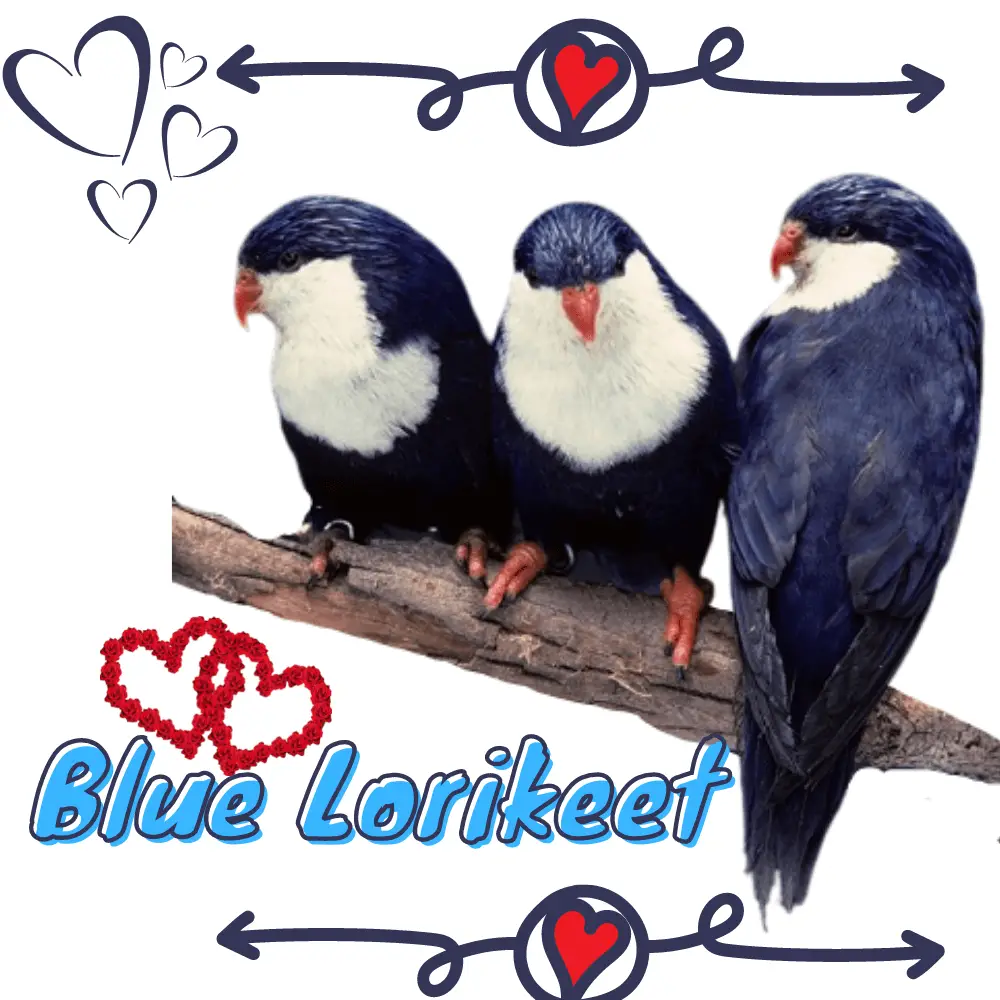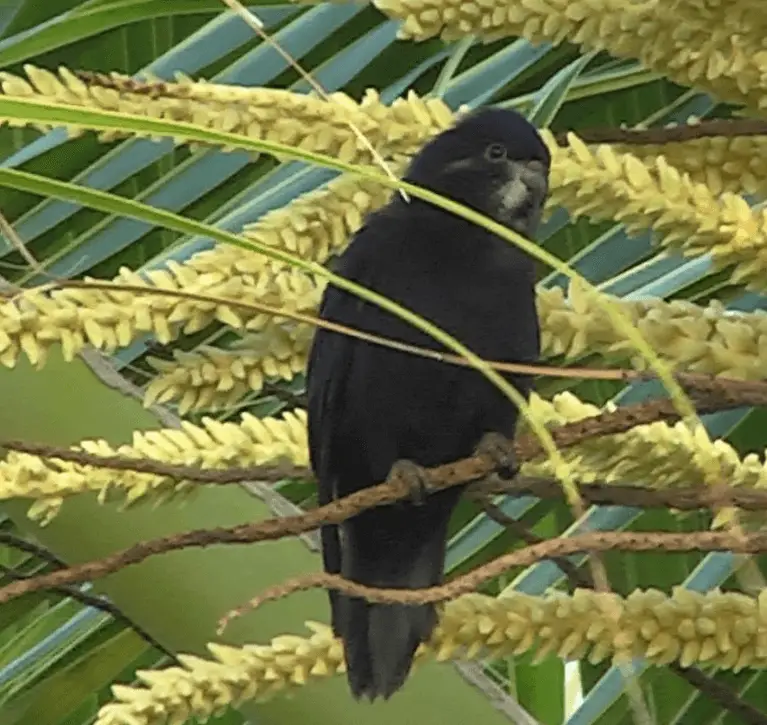
Blue Lorikeet 18 cm; 31–34 g. Orange bill and legs, white from the line through the eye to ear-coverts down to the breast, otherwise deep purplish-blue, with feathers of crown somewhat elongate.
Immature below greyish blue with whitish markings on chin, bill black.
Monotypic.

Subspecies
Monotypic.
The Blue Lorikeet – EN (2012)
SOURCE:AV/DGEE
Distribution
Society Is (Motu One and Manua’e) and W Tuamotu Archipelago (Kaukura, Rangiroa, Arutua, Apataki, and Tikehau), in French Polynesia; also in Aitutaki (Cook Is), were probably introduced; reported in 1999 from Maupihaa (an atoll in Society Is), where had been thought extinct.
Habitat
Blue Lorikeets occupy any wooded habitats, with a possible preference, perhaps only seasonal, for coconut and banana plantations, but mixed stands of native and cultivated trees seem generally favored. On low sandy islets (motus) of atolls, found in flowering plants, e.g. Scaevola.
Movement
Occupation of areas may be related to food availability; few birds were present in S of Aitutaki, Feb 1991, but birds were common there in Oct 1995.
Diet and Foraging
Blue Lorikeet eat Flowers, and/or their products, of coconut, banana, hibiscus, mango, and Tournefortia, leaf shoots of mango, the fruit of Morinda citrifolia, and banana.

Sounds and Vocal Behavior
The commonest call is a high-pitched trisyllabic “tse-tee-teet” or a similar-sounding “tse-tseeuw”. Also a hoarse or raspy “chhhh”.
In-flight, a high-pitched “tsee-seet”.
Breeding
May–Jul claimed, but Oct and Dec–Jan recorded. An Aitutaki nest was 11 m up in a hole at the base of a broken branch of Java plum (Syzygium cumini); one on Manua’e was in a hole high in a dead Pandanus.
Blue Lorikeet Eggs two, size (in captivity) 19·4 mm × 17·2 mm; incubation in captivity 25 days, nestling period c. 60 days.
Conservation Status
VULNERABLE. CITES II. A BirdLife “restricted-range” species. Extinctions have occurred on many islands within this species’s range, only partly compensated by one spectacular introduction (to Aitutaki).
Populations judged as follows: Motu One 500 birds, Manua’e 600–800, Rangiroa possibly several hundred, Arutua unknown, Apataki at least 300 on one motu, Tikehau 60, Aitutaki c. 1200.
Survival of this species is related to the absence of black rats (Rattus rattus), and conservation awareness relating to the prevention of the introduction of this animal is essential.
Also important will be the checking of some still unexplored islands in case they hold populations and the translocation of birds to rat-free islands. Although trade is illegal, birds are still captured and sold on Rangiroa.




















